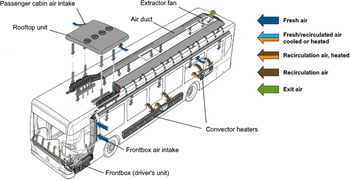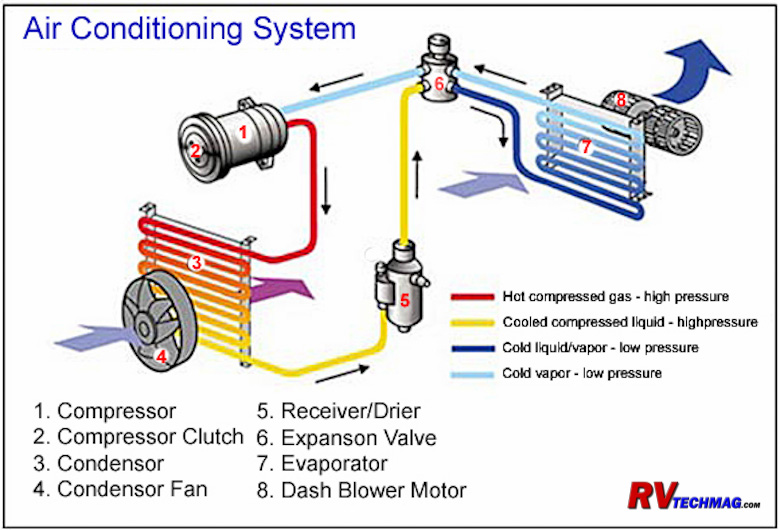Bus Air Conditioning System Diagram
Are you tired of sweating on your daily commute to work? Do you often feel uncomfortable while riding a bus during a heatwave? If so, then you may be interested in learning about the bus air conditioning system diagram and how it works to keep you cool and comfortable. Read on to discover more about this vital component of modern buses.
Pain points of bus air conditioning system diagram
Have you ever experienced a faulty bus air conditioning system? If so, then you know firsthand how frustrating it can be to ride on a bus that is too hot or too cold. A malfunctioning bus air conditioning system can make your daily commute uncomfortable and unbearable, leading to a negative experience. Additionally, a broken air conditioning system can also pose health risks when the weather is too hot or too cold.
What is the target of bus air conditioning system diagram?
The target of the bus air conditioning system diagram is to give an overview of the air conditioning system setup in a bus. The diagram helps to explain how the air conditioning system in a bus works and how each component plays a crucial role in keeping the passengers cool and comfortable while on the bus.
Main points about bus air conditioning system diagram and related keywords
The bus air conditioning system diagram is an essential tool used by mechanics and engineers to install and maintain the air conditioning system in a bus. The diagram usually includes several key components, such as the compressor, condenser, evaporator, expansion valve, and refrigerant. Each of these parts plays a vital role in the proper functioning of the air conditioning system. Regular maintenance of these components is necessary to keep the system working correctly and to avoid breakdowns or malfunctions that can lead to discomfort for passengers.
Components of a bus air conditioning system diagram
One of the primary components of a bus air conditioning system diagram is the compressor. The compressor is responsible for compressing the refrigerant into a high-pressure gas, which then moves to the condenser. The condenser helps to dissipate heat from the compressed gas, causing it to cool further. The cooled refrigerant then moves to the evaporator, which absorbs heat from the air inside the bus, cooling it down. Finally, the expansion valve helps to reduce the pressure of the refrigerant, allowing it to evaporate and cool the air inside the bus continuously.

Each of these components plays a crucial role in maintaining a comfortable temperature inside the bus. Without one of these components, the air conditioning system would not work correctly, resulting in discomfort and inconvenience for the passengers.
Maintenance of bus air conditioning system diagram
Regular maintenance of the bus air conditioning system is essential to ensure that it works correctly and lasts as long as possible. Some maintenance tasks include checking refrigerant and fluid levels, replacing air filters, and inspecting belts and hoses. Neglecting these maintenance tasks can lead to the breakdown of components and the eventual failure of the entire system. Therefore, it's essential to have a regular maintenance schedule and have a professional service your bus air conditioning system periodically.
FAQs about bus air conditioning system diagram
Q: How often should I have my bus air conditioning system serviced?
A: It's recommended to have your bus air conditioning system serviced at least once a year. However, if you notice any strange noises or smells, have it checked out immediately.
Q: Can I install an air conditioning system in an older bus?
A: Yes, it's possible to install an air conditioning system in an older bus. However, the installation process may be more complicated and expensive than installing a system in a newer bus.
Q: What type of refrigerant should I use in my bus air conditioning system?
A: Most buses use R134a refrigerant, which is safe and efficient for cooling purposes.
Q: How long does a bus air conditioning system typically last?
A: With proper maintenance, a bus air conditioning system can last up to 15 years or more.
Conclusion of bus air conditioning system diagram
The bus air conditioning system diagram is an essential tool for understanding the workings of a bus air conditioning system. It's crucial to maintain and service the air conditioning system regularly to keep passengers cool and comfortable during their commute. By following the tips mentioned in this article and having a professional service your bus air conditioning system periodically, you can ensure that it works correctly and lasts as long as possible.
Gallery
Design Of Urban Electric Bus Systems | Design Science | Cambridge Core

Photo Credit by: bing.com / evobus conditioner reproduced refrigeration
Schematic View Of The Inter-city Bus Air Conditioning System | Download

Photo Credit by: bing.com /
Schematic Diagram Of A Conventional Bus Airconditioning System

Photo Credit by: bing.com / airconditioning
RV Air Conditioning Service

Photo Credit by: bing.com / air conditioning car auto works system diagram rv heating ac pressure r134 bus heater service 2007 rvtechmag
Industry News
Photo Credit by: bing.com / bus air conditioning system industry does work guchen conditioner
0 Response to "Bus Air Conditioning System Diagram"
Post a Comment